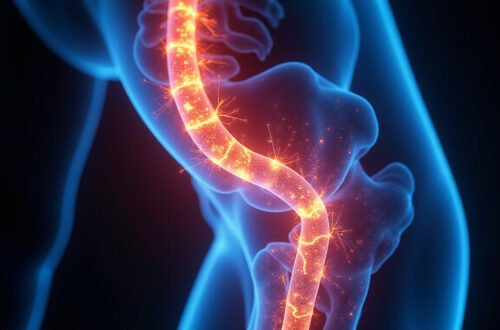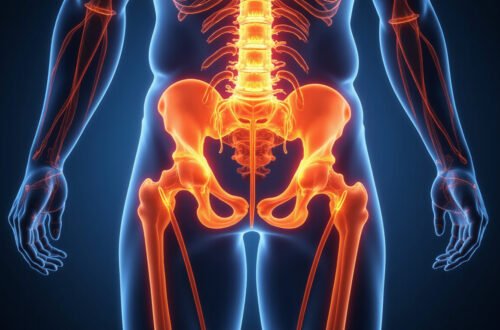Sciatica is a term that encompasses pain and discomfort stemming from the sciatic nerve, which runs from the lower back down through the hips and into the legs.
If you’re experiencing sciatica pain in the hip, you’re not alone—this condition affects millions of people worldwide.
In this article, we will explore effective strategies to alleviate sciatica pain in the hip, including understanding its causes and symptoms, identifying your pain, making lifestyle modifications, engaging in specific physical therapy exercises, exploring alternative treatments, and knowing when it’s crucial to seek medical advice.
Your Sciatica Pain-Free Future Starts Here – Click to Learn More!
Key Takeaways
- Sciatica pain in the hip is often caused by compression of the sciatic nerve due to various conditions.
- Identifying the specific symptoms of sciatica pain in the hip can help guide effective treatment strategies.
- Lifestyle modifications, such as improving posture and incorporating regular exercise, can significantly reduce sciatica pain.
- Physical therapy exercises tailored for hip relief can strengthen muscles and improve mobility, easing sciatica symptoms.
- If sciatica pain persists despite home treatment, seeking medical advice is crucial for appropriate management.
Understanding Sciatica: Causes and Symptoms
Sciatica is a common condition that many people experience, characterized by pain that radiates along the path of the sciatic nerve, which runs from the lower back, through the hips, and down each leg.
One significant symptom that often accompanies this condition is sciatica pain in hip, which can vary in intensity and severity.
Understanding the causes of sciatica is essential for effective management; it can result from a variety of factors, including herniated discs, spinal stenosis, or muscle spasms.
Typically, individuals may feel sharp or aching sensations in their hip area, accompanied by numbness or weakness in the legs.
Recognizing these symptoms early on and consulting a healthcare professional can lead to timely intervention and relief.
Identifying Sciatica Pain in the Hip
Identifying sciatica pain in the hip can be a challenging task, as this discomfort often originates from the lower back and radiates through the hip down to the legs.
Sciatica occurs when the sciatic nerve, which runs from the lower back down to the feet, becomes irritated or compressed.
Individuals suffering from sciatica pain in the hip may experience a range of symptoms, including a sharp or burning sensation, a dull ache, or a feeling of tingling or numbness that can extend into the thigh and buttocks.
It’s crucial to differentiate sciatica pain in the hip from other hip-related issues, such as bursitis or arthritis, which may require different treatment approaches.
Common indicators of sciatica can include pain that worsens with prolonged sitting or standing, difficulty moving the leg, and increased discomfort with certain activities.
If you are experiencing these symptoms, it is advisable to consult a healthcare professional for an accurate diagnosis and effective management plan tailored to your needs.
‘The greatest medicine of all is to teach people how not to need it.’ – Hippocrates
Lifestyle Modifications to Reduce Sciatica Pain
If you are experiencing sciatica pain in hip, making certain lifestyle modifications can significantly alleviate discomfort and improve your quality of life.
First and foremost, incorporating regular stretching and strengthening exercises into your routine can help reduce tension in the lower back and hips.
Activities like yoga or Pilates not only enhance flexibility but also empower your core muscles, providing better support for your spine.
Additionally, paying attention to your posture when sitting, standing, or walking is crucial.
Ensuring that your pelvis is aligned and your spine is straight can minimize strain on the sciatic nerve.
Furthermore, consider adjusting your workstation ergonomics if you spend long hours sitting; using a chair that supports your back and keeping your feet flat on the floor can help reduce sciatica pain in hip.
Another beneficial lifestyle change is maintaining a healthy weight, as excess weight can put added pressure on your spine and exacerbate sciatica symptoms.
Lastly, don’t underestimate the power of heat and cold therapy; applying ice to the affected area may reduce inflammation, while heat can relieve muscle tension.
By adopting these lifestyle modifications, you can effectively manage sciatica pain in hip and promote overall wellness.
Your Sciatica Pain-Free Future Starts Here – Click to Learn More!
Physical Therapy Exercises for Hip Relief
If you’re one of the many individuals struggling with sciatica pain in the hip, incorporating targeted physical therapy exercises into your daily routine can be incredibly beneficial.
Sciatica is often characterized by sharp, radiating pain that starts in the lower back and travels down the leg, frequently impacting the hip area as well.
Fortunately, certain exercises can alleviate this discomfort by stretching tight muscles, strengthening the hip joint, and improving overall mobility.
Consider starting with gentle stretches such as the piriformis stretch, which relaxes the gluteal muscles, or the knee-to-chest stretch to relieve tension in your lower back and hips.
Strengthening exercises, like bridging or clamshells, can enhance your hip stability and reduce the risk of future pain.
Before starting any new exercise program, it’s essential to consult with a healthcare professional, particularly if you’re experiencing significant discomfort.
Regular, mindful movement can make a world of difference in managing sciatica pain in the hip, allowing you to return to your daily activities with greater ease.
Alternative Treatments for Sciatica Pain
When dealing with sciatica pain in the hip, many individuals explore alternative treatments to complement traditional methods.
These strategies can provide relief and promote healing without the potential side effects of medication.
One popular option is chiropractic care, where a professional can manipulate the spine and hips to help relieve pressure on the sciatic nerve.
Additionally, physical therapy focusing on targeted exercises can strengthen the muscles around the hips and back, improving flexibility and ultimately alleviating pain.
Acupuncture is another method that has gained traction, using fine needles to stimulate specific points in the body, which may enhance blood flow and reduce inflammation.
Finally, practices such as yoga and meditation can help manage stress and improve one’s overall mental well-being, which indirectly contributes to reduced perception of pain.
For anyone suffering from sciatica pain in the hip, these alternative treatments can offer valuable support and potentially lead to a more comfortable lifestyle.
FAQs
What are the common causes of sciatica pain in the hip?
Common causes of sciatica pain in the hip include herniated discs, spinal stenosis, muscle spasms, piriformis syndrome, and injuries to the lower back or pelvis that can compress the sciatic nerve.
How can I identify if I have sciatica pain in the hip?
You can identify sciatica pain in the hip by experiencing symptoms such as sharp or burning pain radiating from the lower back through the buttock and down the leg, numbness or tingling in the leg, or difficulty moving the hip joint.
What lifestyle modifications can help reduce sciatica pain in the hip?
To reduce sciatica pain in the hip, consider maintaining proper posture, avoiding prolonged sitting, engaging in regular low-impact exercise, and incorporating stretches that target the lower back and hip area.
What types of physical therapy exercises are recommended for sciatica relief?
Recommended physical therapy exercises for sciatica relief include stretches for the piriformis and hamstrings, strengthening exercises for the core and glutes, and low-impact aerobic activities like walking or swimming.
When should I seek medical advice for persistent sciatica pain?
You should seek medical advice for persistent sciatica pain if you experience severe symptoms, such as loss of bladder or bowel control, significant weakness in the legs, or if the pain does not improve with conservative treatments after a few weeks.






